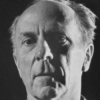Edward Weston

Edward Weston
Edward Henry Westonwas a 20th-century American photographer. He has been called "one of the most innovative and influential American photographers…" and "one of the masters of 20th century photography." Over the course of his 40-year career Weston photographed an increasingly expansive set of subjects, including landscapes, still lifes, nudes, portraits, genre scenes and even whimsical parodies. It is said that he developed a "quintessentially American, and specially Californian, approach to modern photography" because of his focus on the people and...
NationalityAmerican
ProfessionPhotographer
Date of Birth24 March 1888
CityHighland Park, IL
CountryUnited States of America
Since the recording process is instantaneous, and the nature of the image such that it cannot survive corrective handwork, it is obvious that the finished print must be created in full before the film is exposed.
Photography suits the temper of this age - of active bodies and minds. It is a perfect medium for one whose mind is teeming with ideas, imagery, for a prolific worker who would be slowed down by painting or sculpting, for one who sees quickly and acts decisively, accurately.
When subject matter is forced to fit into preconceived patterns, there can be no freshness of vision. Following rules of composition can only lead to a tedious repetition of pictorial cliches.
"Only with effort can the camera be forced to lie: basically it is an honest medium: so the photographer is much more likely to approach nature in a spirit of inquiry, of communion, instead of with the saucy swagger of self-dubbed "artists"."
I start with no preconceived idea - discovery excites me to focus - then rediscovery through the lens - final form of presentation seen on ground glass, the finished print previsioned completely in every detail of texture, movement, proportion, before exposure - the shutter's release automatically and finally fixes my conception, allowing no after manipulation - the ultimate end, the print, is but a duplication of all that I saw and felt through my camera.
The painters have no copyright on modern art!... I believe in, and make no apologies for, photography: it is the most important graphic medium of our day. It does not have to be, indeed cannot be - compared to painting - it has different means and aims.
The creative force in man recognizes and records these rhythms with the medium most suitable to him, the object, or the moment, feeling the cause, the life within the outer form. Recording unfelt facts, acquired by rule, results in sterile inventory. To see the Thing Itself is essential: the quintessence revealed direct without the fog of impressionism - the casual noting of the superficial phase, a transitory mood.
It seems so utterly naive that landscape - not that of the pictorial school - is not considered of "social significance" when it has a far more important bearing on the human race of a given locale than excrescences called cities.
One does not think during creative work, any more than one thinks when driving a car. But one has a background of years - learning, unlearning, success, failure, dreaming, thinking, experience, all this - then the moment of creation, the focusing of all into the moment. So I can make without thought, fifteen carefully considered negatives, one every fifteen minutes, given material with as many possibilities. But there is all the eyes have seen in this life to influence me.
A lifetime can well be spent correcting and improving one's own faults without bothering about others.
It's hard not to tell the truth with a camera. Artists are particularly good at that.
An excellent conception can be quite obscured by faulty technical execution or clarified by faultless technique.
No photographer is better than the simplest of cameras
I always work better when I do not reason, when no question of right or wrong enter in,-when my pulse quickens to the form before me without hesitation nor calculation.